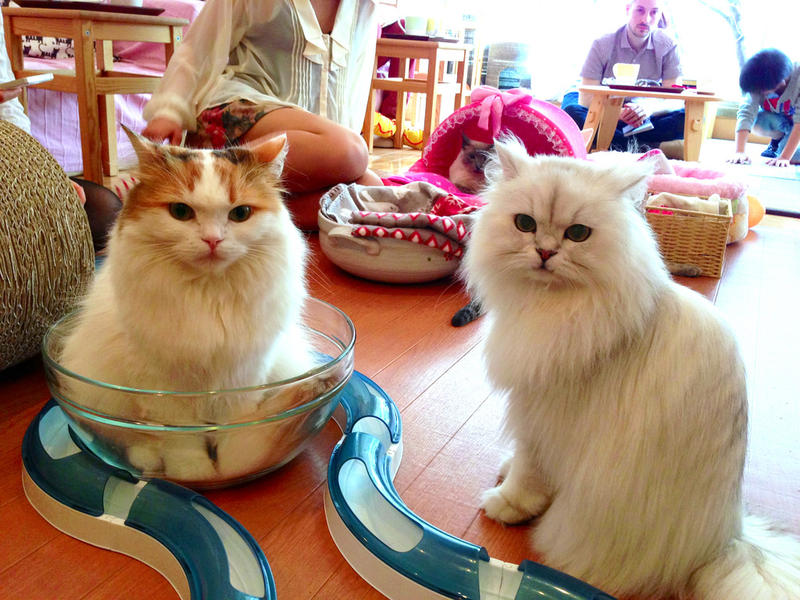We are not few people who have known a cat of the most affectionate that seems to be enchanted with the caresses that we give and a minute later bites us or gives us a paw. The easiest thing when that happens is to blame the cat, but there is a possibility that we were not caressing it properly.
To understand why, the first thing we need is to know a little more about the ancestry of these animals. It is likely that the African wild cat, the most immediate ancestor of the domestic cat, was used only for pest control, but today felines are considered a valuable companion, to the point that for many people they are “hairy babies”.
It is believed that this social metamorphosis of the relationship between humans and cats took place around 4,000 years ago, shortly after the appearance of “man’s best friend”. Although we may consider 4,000 years to be a sufficient amount of time for a species to fully adapt to life in society, this does not seem to be the case with our mustached companion.
Domestic cats show a relatively small genetic divergence from their ancestors. In other words, their brains are still programmed to think like a wild cat. They lead solitary lives and invest considerable time and effort in communicating indirectly, through visual and chemical messages, to avoid relating too much. Thus, it seems unlikely that domestic cats have inherited the complex social skills of their predecessors.
Humans, on the other hand, are inherently social beings for whom approach and contact are displays of affection. In addition, we are attracted by children’s aesthetic traits (large eyes and forehead, small nose and rounded face), which is why many of us think cats are so pretty.
Knowing this, it is no surprise that our initial reaction to seeing one is to want to pet him, to make him caress or simply to smile gawky. Similarly, it should also come as no surprise that some cats find these kinds of interactions a little overwhelming.
The affection in cats
Although many cats like to be petted and, in certain contexts, would choose us over food, they must learn to enjoy interaction with humans during their short adaptation period (two to seven weeks of life).
When talking about the relationship between cats and humans, the characteristics of people are also important. Aspects such as our personality and gender, the parts of the cat’s anatomy that we touch and how we usually handle them are very important when it comes to understanding how the animal responds to our signs of affection.
Some cats react aggressively to unwanted physical contact, while others can tolerate our approaches in exchange, simply, for food and a place to sleep. However, a tolerant cat is not necessarily a happy cat. In fact, the highest levels of stress are seen in cats whose owners claim to be content with petting rather than showing that they don’t like it.

How to pet a cat
The key to success in our cat enterprise is to give the feline the ability to choose and control interactions. For example, it is important to state if you want to receive affection and to control the area of your body in which you are willing to be caressed and for how long.
Because of our tactile nature and our attraction to beautiful animals, we may find it difficult to ignore our instincts and require high doses of self-control. However, it may compensate, as one study shows that interactions are more likely to last longer when it is the cat, rather than the person, who starts them.
It is also important to pay attention to the behavior and postures that the feline acquires during interactions to make sure he is comfortable. In establishing physical contact, less is more, and not only in veterinary examinations, but also when the cat relates to people in a more relaxed environment.
As a general rule, most cats love to be touched around areas where the facial glands are located, such as the base of the ears, under the chin and close to the cheeks. On the contrary, they do not enjoy so much the contact in the belly, the back and the base of the tail.
Signs of cat enjoyment:
- It purrs and does something similar to kneading with its front legs.
- Gently moves the tail from side to side while stretching it in the air.
- Exhibits a relaxed posture and facial expression, with ears pointing forward.
- Pushes you lovingly if you stop stroking to continue.
- It holds the tail upright and initiates contact.
Signs of rejection or tension:
- Moves or turns head away from you.
- Is passive (does not purr or seek physical contact).
- Blinks exaggeratedly, shakes head or body, or licks nose.
- Suddenly and hastily blink for a short time.
- Your hair becomes bristly or your back contracts.
- Moves or wags the tail or hits with it.
- He flattens the ears and directs them to the sides or backwards.
- Turns head sharply to face you or your hand.
- Bites you, or pulls you away or hits your hand with one leg.
Thus, it is debatable whether cats can be considered “hairy babies”. Many love to be touched, while others, at best, put up with it. In any case, it is important to respect the limits that the wild cat inside them sets, even if that means admiring their beauty from afar.
